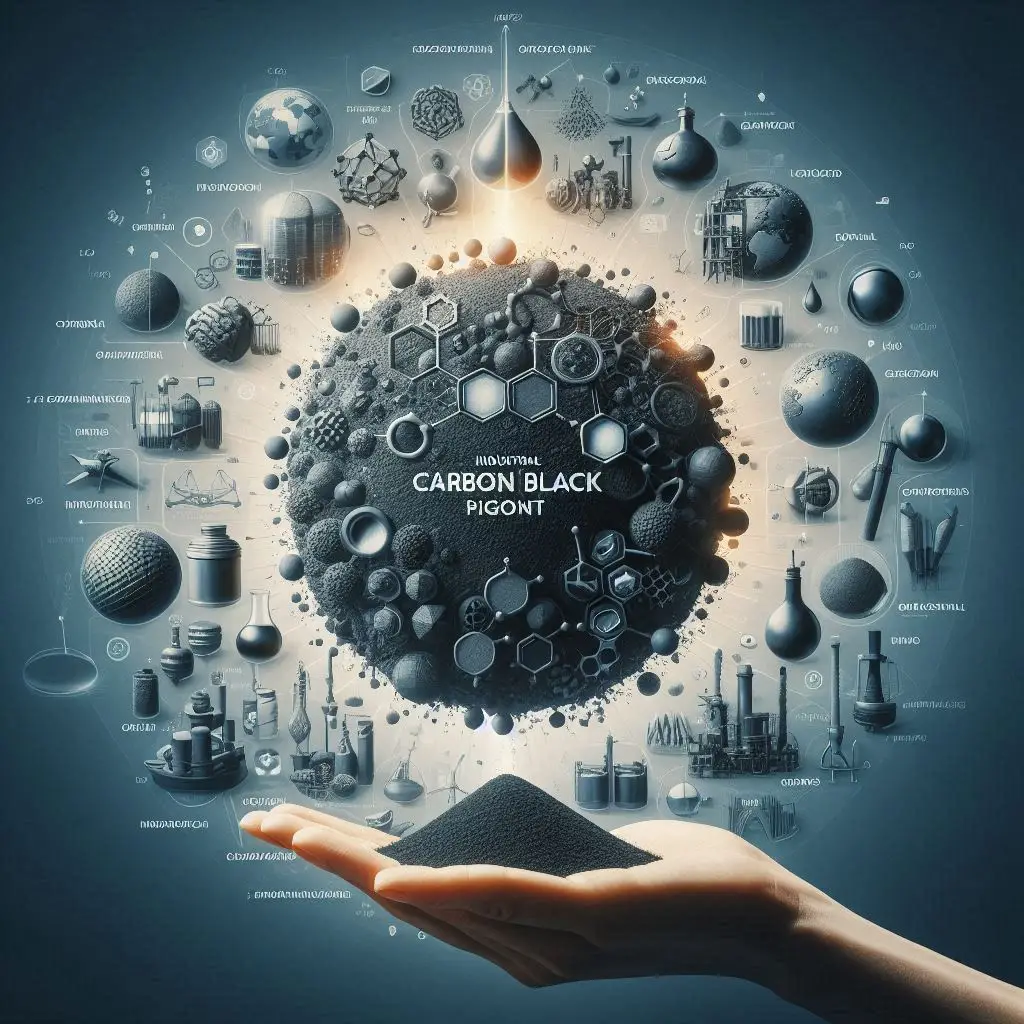
Is Carbon Black Pigment Organic or Inorganic? (Nov 28, 2025)
Short Intro:
Carbon black is a key industrial pigment used in tires, coatings, and batteries. But is it classified as organic or inorganic?
What You’ll Learn:
- Key differences between organic and inorganic pigments
- Why carbon black is classified as inorganic
- Industrial applications in rubber, coatings, and energy storage
- Environmental and regulatory considerations
- NovinTrades market view on carbon black trends
1) Introduction: Is Carbon Black Pigment Organic or Inorganic?
SEO Snippet: Carbon black is an essential industrial pigment classified as inorganic due to its chemical structure and stability.
Carbon black pigment is a fine black powder mainly composed of elemental carbon, produced by incomplete combustion or thermal decomposition of hydrocarbons such as petroleum, natural gas, or coal tar. Its deep black color and reinforcing properties make it crucial in industries from tires to electronics.
Historically used in inks and dyes, carbon black’s modern applications extend to rubber, plastics, coatings, and batteries. Its ability to absorb nearly all visible light and enhance mechanical and electrical properties makes it indispensable.
Yet, questions about its classification persist. While carbon is a key component in organic chemistry, carbon black lacks certain chemical characteristics typical of organic compounds. Understanding its nature is vital for industrial, environmental, and regulatory purposes.
Transitioning to the next section, we will explore carbon black’s properties and industrial relevance.
2) Understanding Carbon Black Pigment
SEO Snippet: Carbon black is a fine powdered pigment used across multiple industries for its color, durability, and conductivity.
Carbon black is widely utilized in:
- Rubber and Tire Manufacturing: Improves durability and wear resistance.
- Dyes, Inks, and Coatings: Enhances color strength and UV stability.
- Energy Storage: Boosts conductivity in batteries and supercapacitors.
- Industrial Coatings: Provides high-performance finishes for automotive, marine, and wood surfaces.
Chemically, carbon black is nearly pure carbon with trace oxygen, hydrogen, nitrogen, and sulfur. Produced via incomplete combustion of hydrocarbons, it forms fine, high-surface-area particles. Its lightweight, fluffy powder form undergoes further processing to meet industrial standards.
LSI Keywords: carbon black powder, industrial pigment, rubber additive, conductive carbon, carbon black coatings, black pigment uses
External Links: ScienceDirect – Carbon Black Overview | Rubber World – Carbon Black Applications
NovinTrades Market View and Forecast:
The global carbon black market is projected to grow steadily, driven by automotive demand and energy storage innovations. Emerging recycling technologies may reshape supply dynamics.
3) Carbon Black Pigment: Organic or Inorganic?
SEO Snippet: Carbon black is classified as an inorganic pigment despite being carbon-based, due to the absence of C-H bonds and high stability.
Organic Pigments: Carbon-based compounds containing hydrogen (C-H bonds), often natural or synthetically produced. They are brightly colored but less durable under heat or chemicals.
Inorganic Pigments: Mineral-based compounds without carbon-hydrogen bonds, valued for thermal stability, opacity, and chemical resistance. Examples include titanium dioxide, iron oxides, and ultramarine blue.
Classification of Carbon Black:
- Lacks carbon-hydrogen bonds, a hallmark of organic compounds
- Non-biodegradable and resistant to microbial degradation
- Exhibits properties akin to inorganic pigments such as high thermal and chemical stability
Hence, industrially, carbon black is considered an inorganic pigment despite its elemental carbon composition.
LSI Keywords: carbon pigment classification, inorganic black pigment, C-H bond absence, carbon black chemical stability
External Links: Color Pigments Handbook | Chemistry World – Pigments
4) Industrial and Environmental Significance
SEO Snippet: Carbon black enhances product performance, sustainability, and energy efficiency, but requires careful handling and regulatory compliance.
Carbon black reinforces tires, extending their lifespan and reducing waste. In energy storage, it improves battery and supercapacitor efficiency. Its use in coatings and inks ensures high-opacity, UV-resistant finishes.
Environmental and regulatory considerations include:
- Safe handling and storage to minimize airborne exposure
- Efficient production processes to reduce emissions
- Recycling of carbon black from used tires for sustainability
LSI Keywords: carbon black environmental impact, industrial safety, battery additives, tire reinforcement, sustainable pigments
External Links: EPA – Carbon Black Safety | Journal of Cleaner Production
NovinTrades Market View:
Innovations in carbon black recycling and lower-emission manufacturing could influence market pricing and adoption trends over the next decade.
5) Conclusion: Is Carbon Black Pigment Organic or Inorganic?
SEO Snippet: Carbon black is an inorganic pigment with critical industrial and environmental roles, supporting tire durability, coatings, and energy storage.
Carbon black is best classified as an inorganic pigment due to the absence of C-H bonds, chemical stability, and resistance to biodegradation. Its significance spans tires, coatings, inks, plastics, and energy storage. Sustainable production and recycling initiatives are shaping the future of this essential industrial material.
LSI Keywords: carbon black industrial uses, inorganic pigment properties, energy storage carbon, tire reinforcement carbon, sustainable carbon black
External Links: NovinTrades Market Insights | ScienceDirect Carbon Black Review
For more expert insights, visit the NovinTrades Reportage section for detailed analyses and market trends.
About NovinTrades
As part of its mission, NovinTrades offers a dedicated Reportage section where businesses, brands, and professionals can publish in-depth sponsored articles, analyses, and thought-leadership pieces. These reportages are SEO-optimized for maximum visibility and long-term engagement.
📍 Explore more at NovinTrades Reportages
📣 Join us on Telegram: https://t.me/novintrades
FAQs (FAQ Schema Ready):
- Q: Is carbon black pigment considered organic?
A: No, it is classified as an inorganic pigment due to the lack of carbon-hydrogen bonds. - Q: What industries use carbon black?
A: Tires, rubber, coatings, inks, plastics, and energy storage applications. - Q: Is carbon black environmentally safe?
A: It is durable but requires careful handling, recycling, and emission control to minimize environmental impact.

